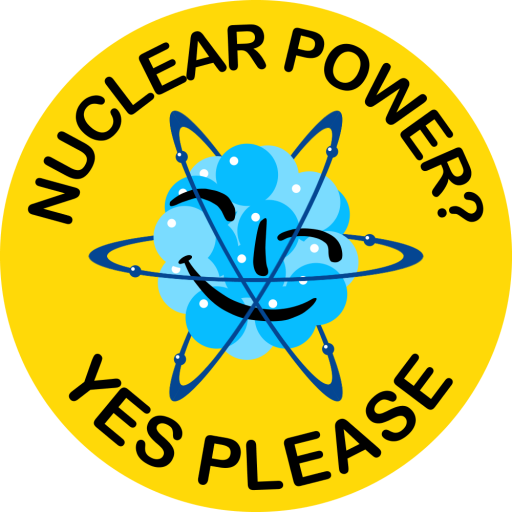Last updated on March 1, 2013
By Michael Karnerfors, 2009-10-24
I have had some crazy last few days, culminating with a Swedish newspaper calling me and asking me if I am a saboteur trying to wreck a scientist’s work on behalf of the nuclear industry! Whatever prompted anyone to ask something that bizarre? Well, the whole thing started over 30 years ago…
Anyone using fissionable material in Sweden is by law responsible for the safekeeping and disposal of the end-products. We’re not allowing reprocessing, and we’re not allowing the export of highly radioactive waste products, so we have to deposit any such materials.
To that end, the Swedish nuclear power companies formed the Swedish Nuclear Fuel And Waste Management Company, SKB for short for the purpose to researching a viable method to deposit spent nuclear fuel that is acceptable for the public as well as politically. Not that we didn’t know of viable methods since such methods were known since the early 70’s. But only very few of them were palatable, so we needed a bit of research of our own. The project “KärnBränsleSäkerhet” (Nuclear fuel safety), or KBS for short, was started in 1976. In 1983 the third report of this project, KBS-3, was put forth and it proposed what is most likely a solution to the nuclear waste problem.

To summarize KBS-3, it describes a deep bedrock repository, 500 meters down where the fuel will be contained by three independent barriers. Tunnels will be made in the bedrock, and holes will be drilled out from the tunnels. Each hole will be lined with watertight bentonite clay, and in each of these holes a friction-welded canister made from 5 cm thick corrosion-resistant copper, with cast iron insets holding the nuclear fuel, will be placed. Slow moving water in the bedrock will wetten the bentonite clay, which will swell to a pressure of up to 50 atmospheres, sealing all cracks and fissures, thereby preventing water movement around the canisters. When the repository is full, all tunnels will be filled with bentonite clay and the access tunnel may be filled to the surface with Portland cement. From then on, around the year 2070, it can be left there, maintenance-free for 100 000 years until the waste has decayed to a level of radioactivity that is the same as uranium ore.
SKB has been performing research up ’til now to verify that KBS-3 holds. Using data from natural analogues such as Oklo, Gabon; Littleham Cove, UK; Cigar lake, Canada; along with theoretical analysis, experiments and simulations; they have been verifying that the different barriers should hold. And in late 2010/early 2011 SKB will be handing the final proposal, along with all the research, to the authorities for validation and being granted a permit to build the Swedish nuclear fuel repository.
However there is a cloud looming on the horizon. Up until now, it has been assumed that in the oxygen-depleted, reducing environment that exists in the Swedish bedrock chosen at Forsmark, copper cannot possibly corrode. But a team of scientists from Uppsala University (UU) and Royal Institute of Technology (KTH) claim they have performed research where they have been able to make copper corrode under anoxic conditions. We have written about that before.
This has caused a bit of a stir because this research has not been independently verified yet. It has not been published in a peer reviewed manner. And SKB says that despite being given all these claims since years back, they haven’t been able to reproduce the results. Putting further spin on this is that the scientists have patented a method of coating the capsules, someting which they claim solves the supposed problem with corroding copper. So we find ourselves in a situation where SKB says “We cannot confirm this is a problem” and the scientists Szakalos and Hultqvist are saying “But it is indeed a problem!”. So in mid-November this year, there will be a workshop where Szakalos, representatives from SKB, and other researchers get together to discuss this matter in an effort to try to reach consensus.
And this is where I stepped into the picture and accidentally caused a bloody mess…
Continued in part 2…

Warning: Declaration of Social_Walker_Comment::start_lvl(&$output, $depth, $args) should be compatible with Walker_Comment::start_lvl(&$output, $depth = 0, $args = Array) in /var/www/nuclearpoweryesplease.org/public_html/blog/wp-content/plugins/social/lib/social/walker/comment.php on line 18
Warning: Declaration of Social_Walker_Comment::end_lvl(&$output, $depth, $args) should be compatible with Walker_Comment::end_lvl(&$output, $depth = 0, $args = Array) in /var/www/nuclearpoweryesplease.org/public_html/blog/wp-content/plugins/social/lib/social/walker/comment.php on line 42
[…] emeritus Rune Lagneborg som skulle vara moderator att hoppa av i protest. Det visade sig sen vara Michael Karnerfors, grundare av Nuclear Power? – Yes Please som hade begärt ut e-posten som dragit tillbaka sin […]
[…] In English « Michael, the saboteur?! Part one… […]